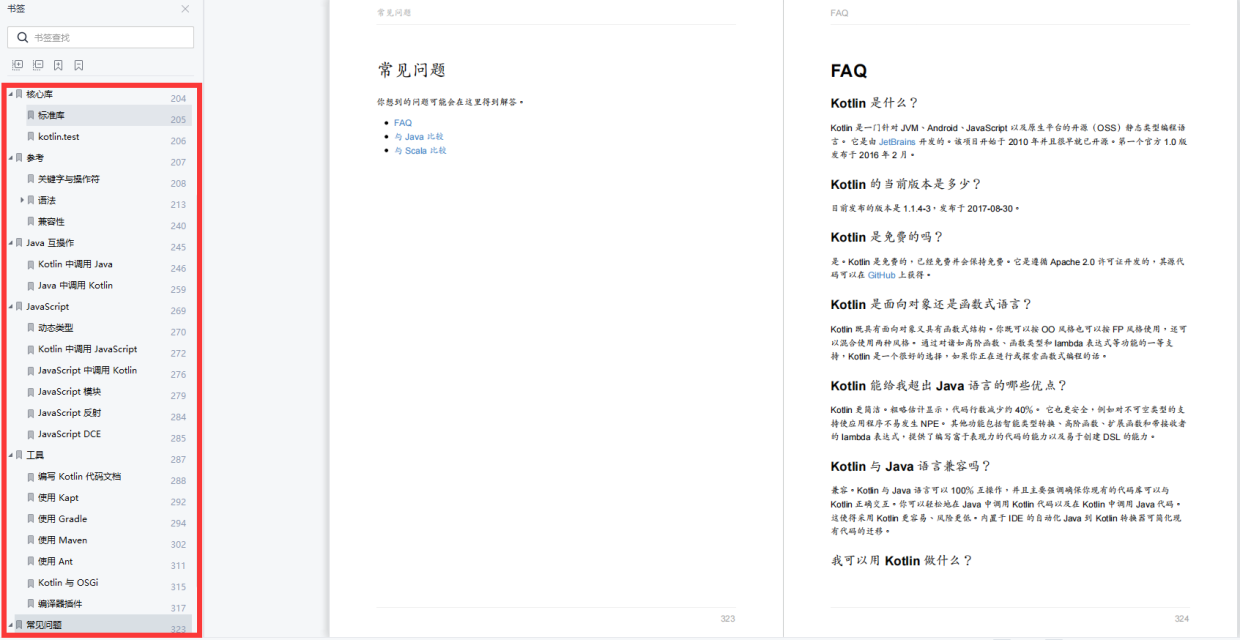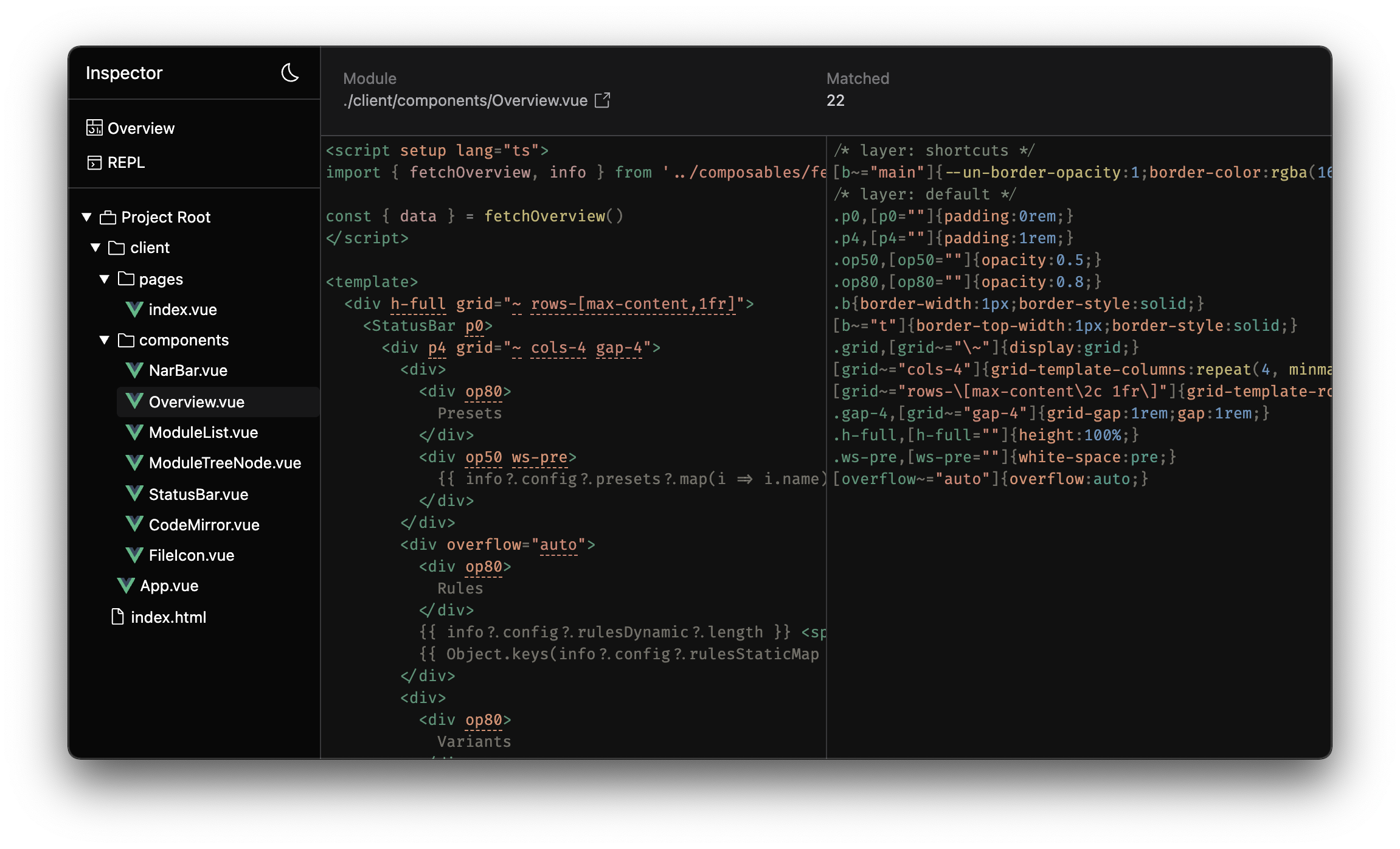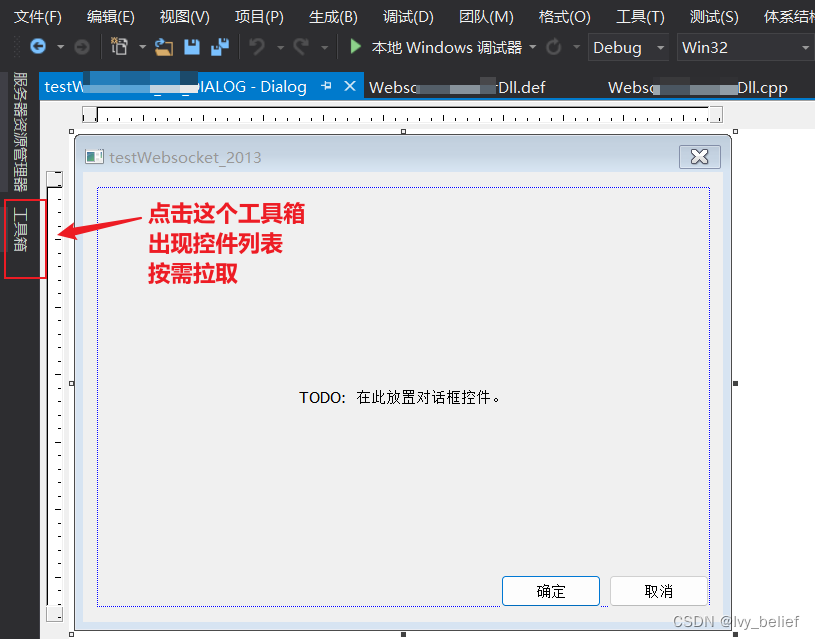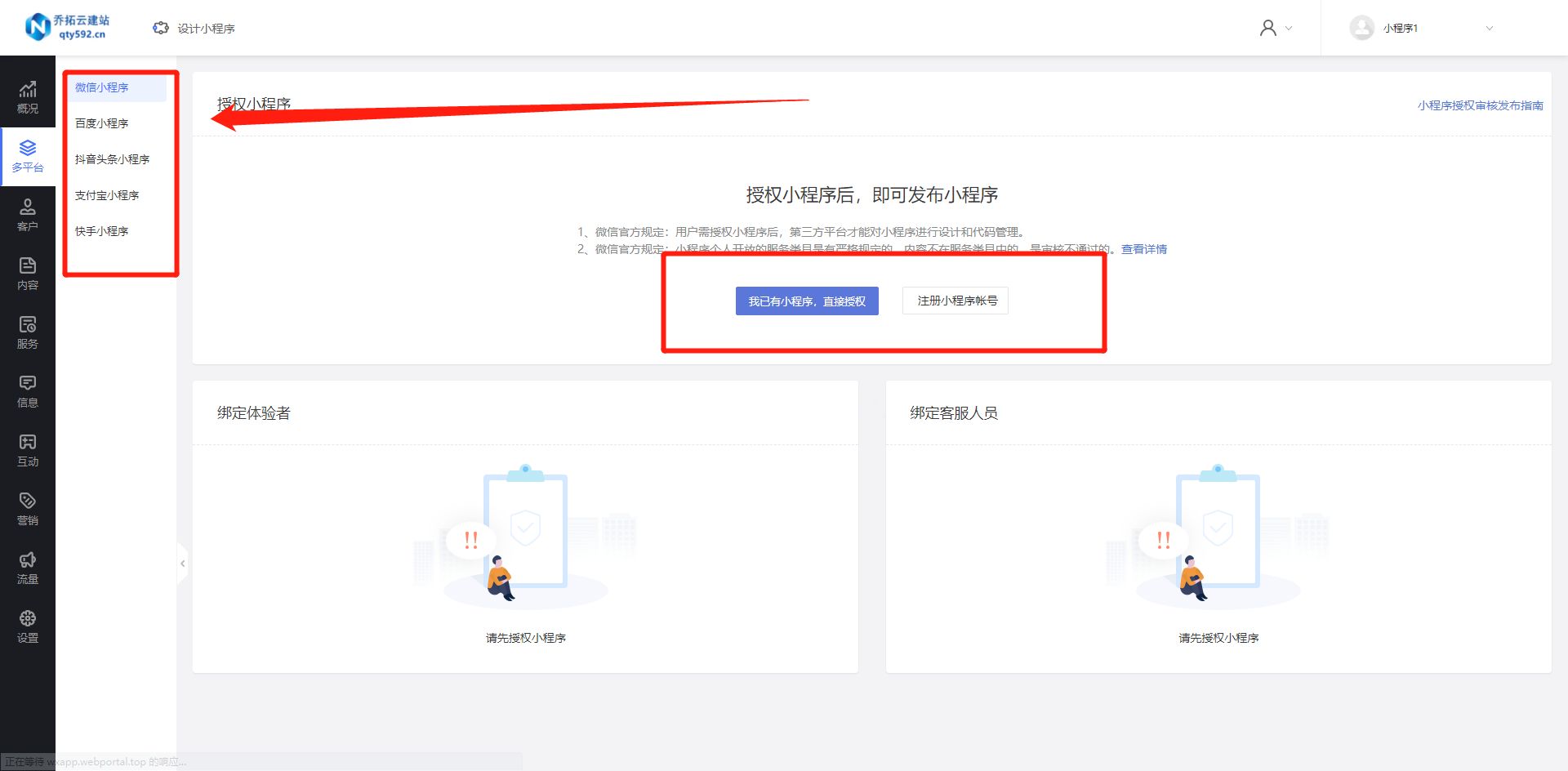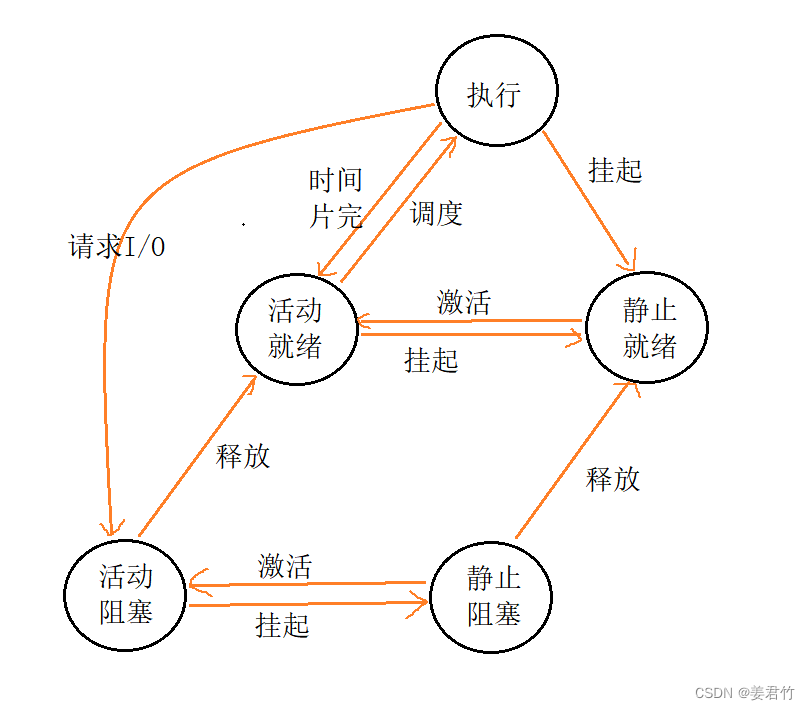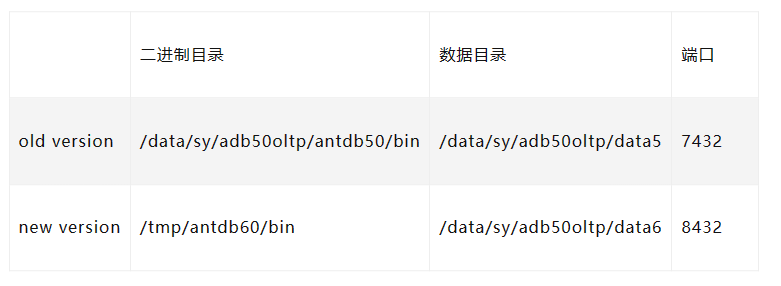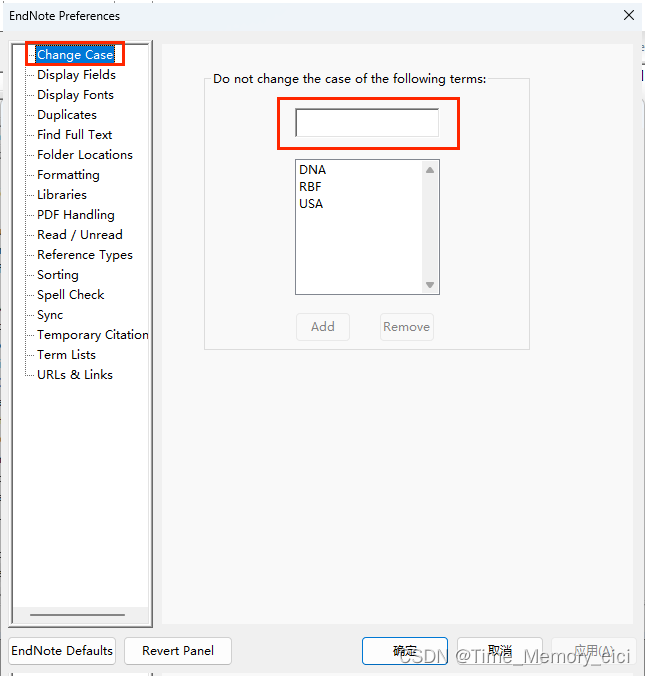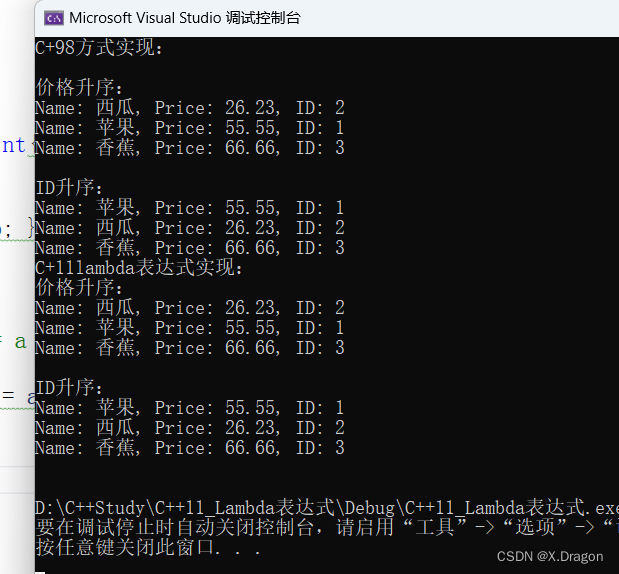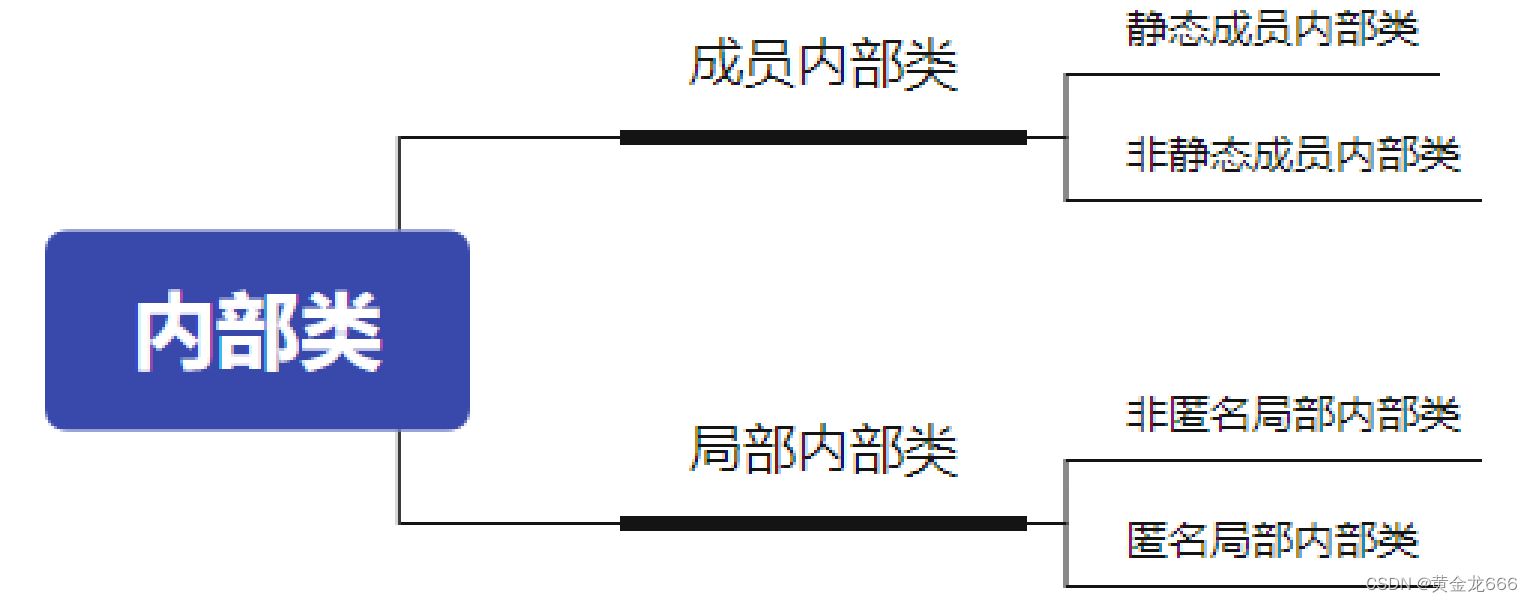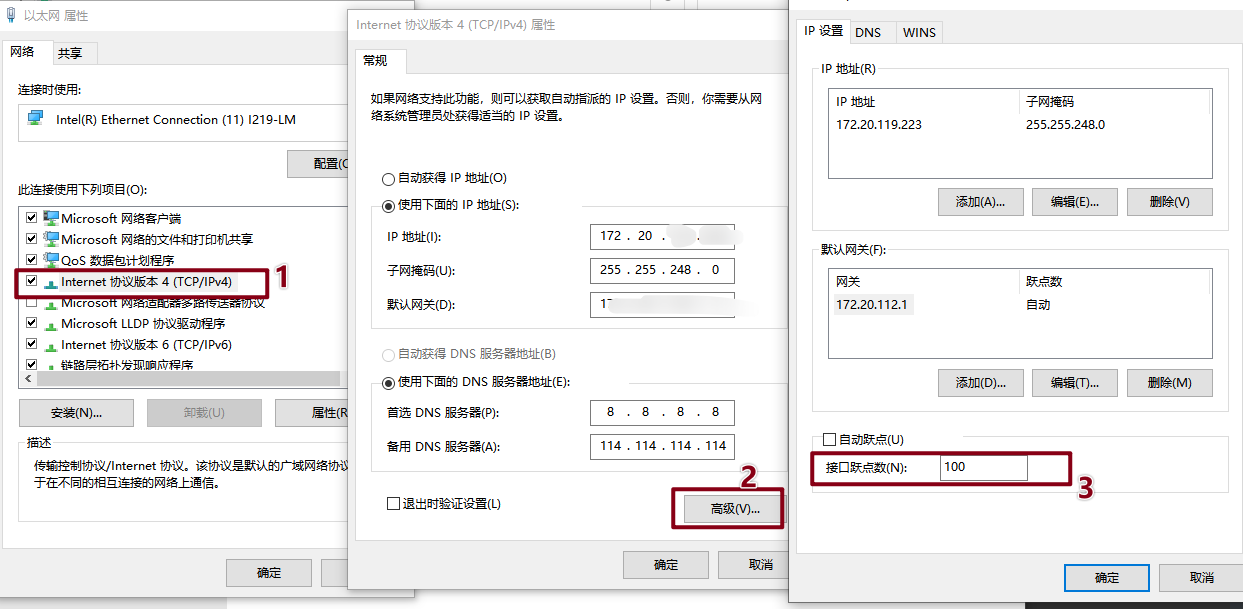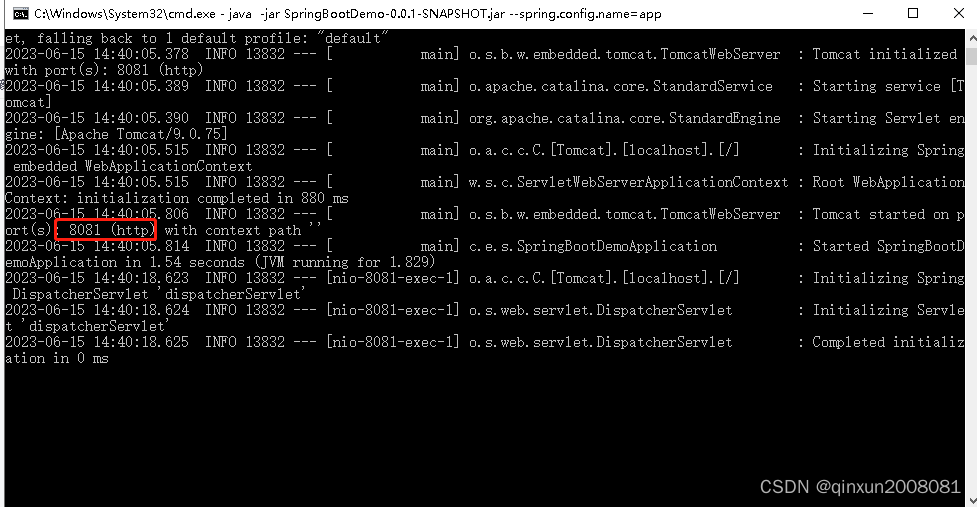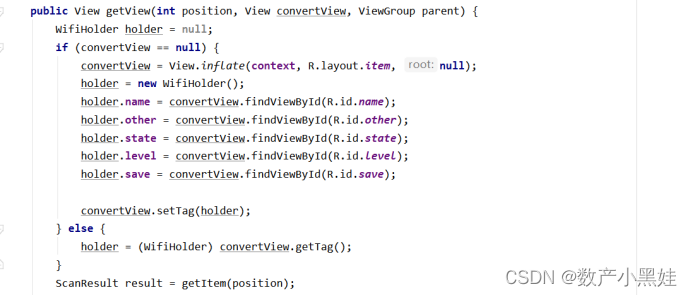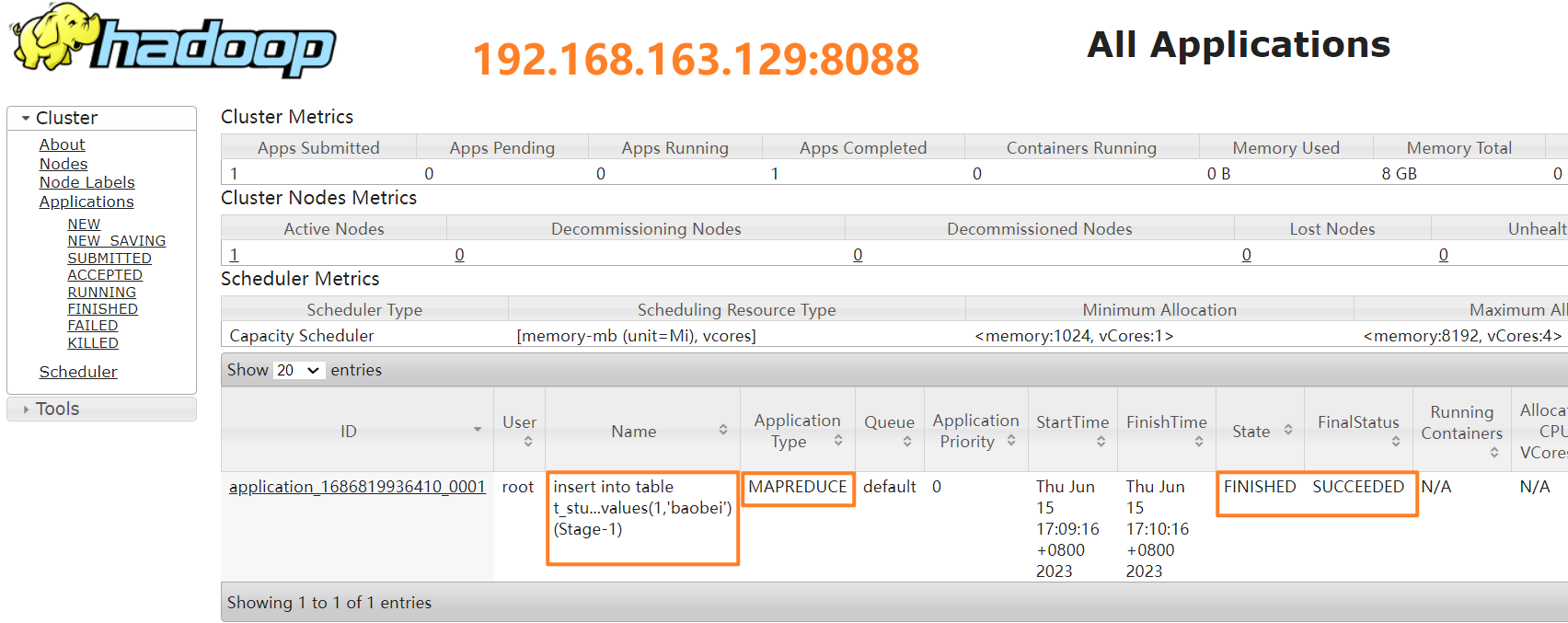多线程详解
Process和Thread
-
程序是指令和数据的有序结合,其本身没有任何运行的含义,是一个静态的概念
-
进程是执行程序的一次执行过程,是一个动态的概念,是系统资源分配的单位
-
通常在一个进程中可以包含若干个线程。线程是CPU调度和执行的单位
核心概念
-
线程就是独立的执行路径
-
在程序运行的时候,即使没有自己创建线程,后台也会有多个线程
-
main()称之为主线程,为系统的入口,用于执行整个程序
-
在一个进程中,如果开辟了多个线程,线程的运行由调度器安排调度。
调度器是与操作系统紧密相关的,先后顺序是不能人为的干预的
-
对同一份资源操作时,会存在资源抢夺问题,需要加入并发控制。
-
线程会带来额外的开销,如CPU调度时间,并发控制开销
-
每个线程在自己的工作内存交互,内存控制不当会造成数据不一致
三种创建方式
-
继承Thread类(重点)
-
启动程序:子类对象:.start()
-
不建议使用:避免OOP单继承局限性
-
-
实现Runnable接口(重点)
-
启动线程:传入目标对象+Thread对象.start()
-
推荐使用:避免单继承局限性,灵活方便,方便同一个对象被多个线程使用
-
-
实现Callable接口
继承Thread类
-
自定义线程继承Thread类
-
重写run()方法,编写线程执行体
-
创建线程对象,调用start()方法启动线程
//创建线程方式一:1 继承Thread类 2重写run()方法 3 调用start开启线程
public class TestThread1 extends Thread{
//重写run()方法
@Override
public void run() {
for (int i = 0; i <50 ; i++) {
System.out.println("我在睡觉"+i);
}
}
public static void main(String[] args) {
//创建一个线程对象
TestThread1 testThread1=new TestThread1();
//调用一个start()方法开始线程
testThread1.start();
for (int i = 0; i <100 ; i++) {
System.out.println("我在吃饭"+i);
}
}
}网图下载
//练习用Thread,实现多线程同步下载图片
public class TestThread2 extends Thread{
private String url;
private String name;
public TestThread2( String url,String name){
this.url=url;
this.name=name;
}
//线程执行体
@Override
public void run() {
WebDownLoader webDownLoader=new WebDownLoader();
webDownLoader.downloader(url,name);
System.out.println("下载了文件名为"+name);
}
public static void main(String[] args) {
TestThread2 t1 =new TestThread2("https://t7.baidu.com/it/u=1819248061,230866778&fm=193&f=GIF","2.jpg");
TestThread2 t2 =new TestThread2("https://img1.baidu.com/it/u=3776011775,176672726&fm=253&fmt=auto&app=138&f=JPEG?w=889&h=500","3.jpg");
TestThread2 t3=new TestThread2("https://t7.baidu.com/it/u=963301259,1982396977&fm=193&f=GIF","4.jpg");
t1.start();
t2.start();
t3.start();
}
}
//下载器
class WebDownLoader{
//下载方法
public void downloader (String url,String name) {
try {
FileUtils.copyURLToFile(new URL(url),new File(name) );
} catch (IOException e) {
e.printStackTrace();
System.out.println("io异常,downloader方法出现问题");
}
}
}
实现Runnable接口
-
定义MyRunnable类接口实现Runnable接口
-
实现run()方法,编写线程执行体
-
创建线程对象,调用start()方法启动线程
//创建线程的方式二 1 实现Runnable接口 2 重写run方法,执行线程需要丢入runnable接口实现类,调用start方法
public class TestThread3 implements Runnable{
//重写run()方法
@Override
public void run() {
for (int i = 0; i <50 ; i++) {
System.out.println("我在睡觉"+i);
}
}
public static void main(String[] args) {
//创建runnable接口的实现类对象
TestThread3 testThread3=new TestThread3();
//创建线程对象,通过线程对象来开启线程(代理)
new Thread(testThread3).start();
for (int i = 0; i <100 ; i++) {
System.out.println("我在吃饭"+i);
}
}
}
初识并发问题
//多个线程操作同一个对象时
//多个线程操作同一个对象时,线程不安全,数据紊乱
public class TestThread4 implements Runnable{
private int ticketNums=10;
@Override
public void run() {
while(true){
if (ticketNums<=0){
break;
}
//模拟延时
try {
Thread.sleep(200);
} catch (InterruptedException e) {
throw new RuntimeException(e);
}
System.out.println(Thread.currentThread().getName()+"--》拿到了第"+ticketNums--+"张票");
}
}
public static void main(String[] args) {
TestThread4 ticket=new TestThread4();
new Thread(ticket,"花海").start();
new Thread(ticket,"枫").start();
new Thread(ticket,"林夕").start();
}
}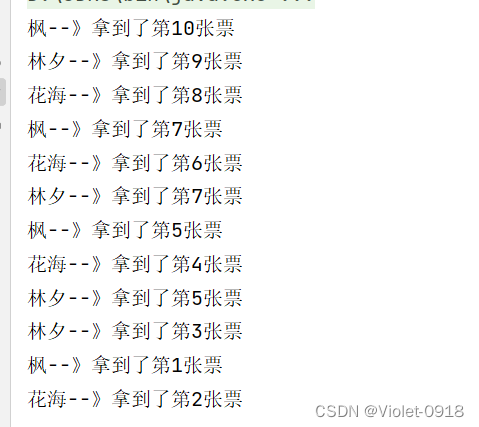
龟兔赛跑
//模拟龟兔赛跑
public class Race implements Runnable{
//胜利者
private String winner;
@Override
public void run() {
//赛道
for (int i = 0; i <= 100; i++) {
//兔子睡觉
if (Thread.currentThread().getName().equals("兔子")&&(0==i%50)){
try {
Thread.sleep(1);
} catch (InterruptedException e) {
throw new RuntimeException(e);
}
}
//判断游戏是否结束
boolean flag=gameOver(i);
if (flag){
break;
}
System.out.println(Thread.currentThread().getName()+"跑了"+i+"步");
}
}
//判断游戏胜利
public boolean gameOver(int steps){
if (winner!=null){//已经出现胜利者
return true;
}else{
if (steps>=100){
winner=Thread.currentThread().getName();
System.out.println("winner is:"+winner);
}
}
return false;
}
public static void main(String[] args) {
Race race=new Race();
new Thread(race,"兔子").start();
new Thread(race,"乌龟").start();
}
}
实现Callable接口
//创建线程方式三 实现Callable接口
//可以定义返回值
//可以抛出异常
public class TestCallable implements Callable<Boolean> {
private String url;
private String name;
public TestCallable( String url,String name){
this.url=url;
this.name=name;
}
//线程执行体
@Override
public Boolean call() {
WebDownLoader1 webDownLoader=new WebDownLoader1();
webDownLoader.downloader(url,name);
System.out.println("下载了文件名为"+name);
return true;
}
public static void main(String[] args) throws Exception {
TestCallable t1 =new TestCallable("https://t7.baidu.com/it/u=1819248061,230866778&fm=193&f=GIF","2.jpg");
TestCallable t2 =new TestCallable("https://img1.baidu.com/it/u=3776011775,176672726&fm=253&fmt=auto&app=138&f=JPEG?w=889&h=500","3.jpg");
TestCallable t3=new TestCallable("https://t7.baidu.com/it/u=963301259,1982396977&fm=193&f=GIF","4.jpg");
//创建执行服务
ExecutorService ser= Executors.newFixedThreadPool(3);
//提交执行
Future<Boolean> result1= ser.submit(t1);
Future<Boolean> result2= ser.submit(t2);
Future<Boolean> result3= ser.submit(t3);
//获取结果
boolean results1=result1.get();
boolean results2=result1.get();
boolean results3=result1.get();
//关闭服务
ser.shutdownNow();
}
}
//下载器
class WebDownLoader1{
//下载方法
public void downloader (String url,String name) {
try {
FileUtils.copyURLToFile(new URL(url),new File(name) );
} catch (IOException e) {
e.printStackTrace();
System.out.println("io异常,downloader方法出现问题");
}
}
}静态代理
//静态代理模式
//真实对象和代理对象都要实现同一个接口
//代理对象要代理真实角色
//好处;1 代理对象可以做真实对象做不了的事情 2 真实对象做自己的事
public class TestProxy {
public static void main(String[] args) {
WeddingCompany weddingCompany =new WeddingCompany(new You());
weddingCompany.HappyMarry();
}
}
interface Marry{
void HappyMarry();
}
//真实角色(你结婚)
class You implements Marry{
@Override
public void HappyMarry() {
System.out.println("林夕");
}
}
//代理角色(婚庆公司,帮助你结婚)
class WeddingCompany implements Marry{
private Marry target;
public WeddingCompany(Marry target) {
this.target = target;//真实对象
}
@Override
public void HappyMarry() {
before();
this.target.HappyMarry();
after();
}
private void after() {
System.out.println("打扫现场");
}
private void before() {
System.out.println("布置现场");
}
}Lamda模式
-
使用Lamda表达式的原因
-
避免匿名内部类定义过多
-
可以使代码看起来简洁
-
-
Functional Interface(函数式接口)
-
定义:任何接口,如果只含有唯一一种抽象方法,那麽他就是一个函数式接口
-
对于函数式接口,我们可以通过Lamda表达式来创建该接口的对象
-
//推导Lamda表达式
public class TestLamda1 {
//静态内部类
static class Like2 implements ILike{
@Override
public void lamda() {
System.out.println(" i like Lamda2");
}
}
public static void main(String[] args) {
ILike like = new Like();
like.lamda();
like=new Like2();
like.lamda();
//局部内部类
class Like3 implements ILike{
@Override
public void lamda() {
System.out.println(" i like Lamda3");
}
}
like=new Like3();
like.lamda();
//匿名内部类;没有类的名称,必须借助接口或者父类
like=new ILike() {
@Override
public void lamda() {
System.out.println(" i like Lamda4");
}
};
like.lamda();
//Lamda简化
like=()-> {
System.out.println(" i like Lamda5");
};
like.lamda();
}
}
//定义一个函数式接口
interface ILike{
void lamda();
}
//实现类
class Like implements ILike{
@Override
public void lamda() {
System.out.println(" i like Lamda");
}
}public class TestLamda2 {
public static void main(String[] args) {
ILove love = (int a)-> {
System.out.println("i love"+a);
};
love.love(520);
}
}
interface ILove{
void love(int a);
}线程状态
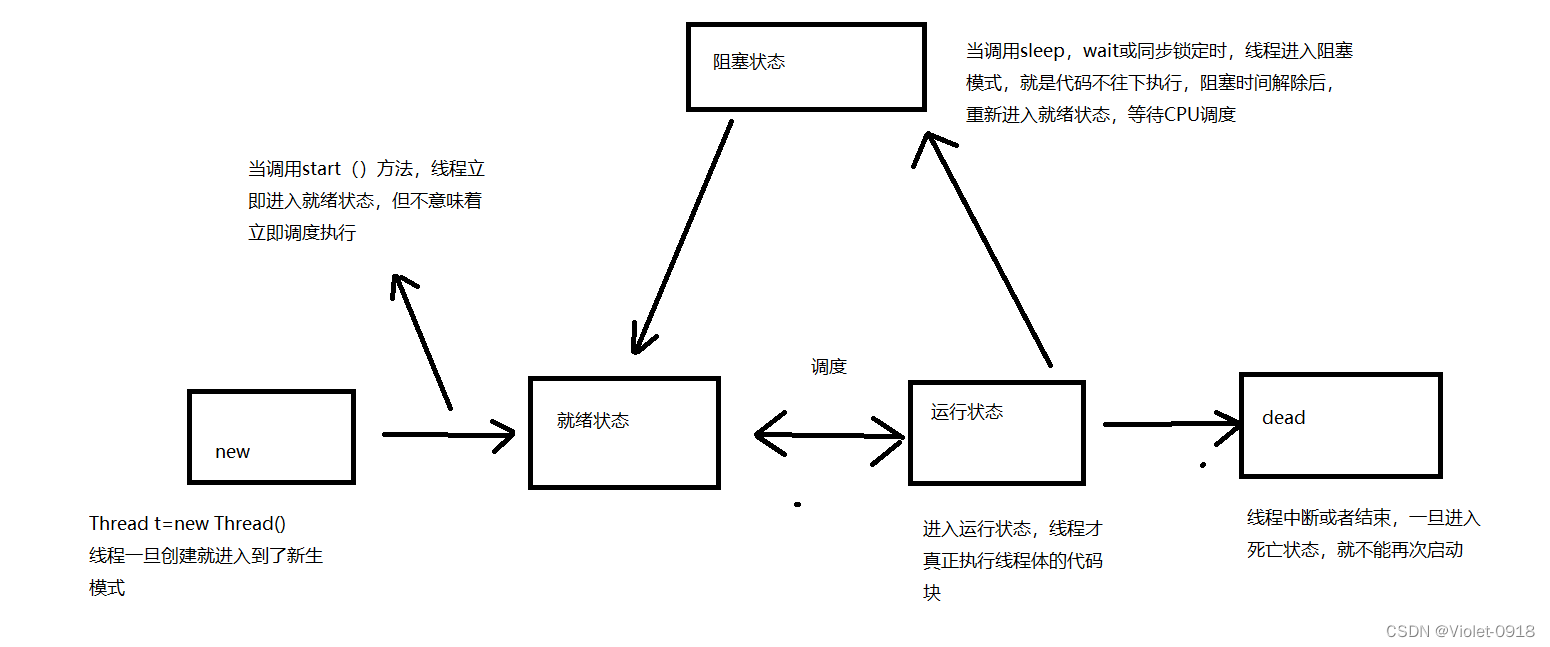
停止线程
//停止线程
//1 推荐线程自己停下来 2建议使用一个标志位进行终止变量,当flag=false时,线程终止执行
public class TestStop implements Runnable{
//创建一个标志位
private boolean flag=true;
@Override
public void run() {
int i=0;
while(flag){
System.out.println("run -----Thread"+i++);
}
}
//设置一个公开的方法停止线程,转换标志位
public void stop(){
this.flag=false;
}
public static void main(String[] args) {
TestStop testStop = new TestStop();
new Thread(testStop).start();
for (int i = 0; i < 1000; i++) {
System.out.println("main"+i);
if (i==900){
//调用stop方法切换标志位,停止线程
testStop.stop();
System.out.println("线程停止");
}
}
}
}
线程休眠-Sleep
-
每一个对象都有一把锁,sleep不会释放锁
-
模拟网络延时
-
//模拟网络延时:方法问题的发生性
public class TestThread4 implements Runnable{
private int ticketNums=10;
@Override
public void run() {
while(true){
if (ticketNums<=0){
break;
}
//模拟延时
try {
Thread.sleep(200);
} catch (InterruptedException e) {
throw new RuntimeException(e);
}
System.out.println(Thread.currentThread().getName()+"--》拿到了第"+ticketNums--+"张票");
}
}
public static void main(String[] args) {
TestThread4 ticket=new TestThread4();
new Thread(ticket,"花海").start();
new Thread(ticket,"枫").start();
new Thread(ticket,"林夕").start();
}
}-
模拟倒计时
//模拟倒计时
public class TestSleep {
public static void main(String[] args) {
try {
tenDown();
} catch (Exception e) {
throw new RuntimeException(e);
}
}
//模拟倒计时
public static void tenDown()throws Exception{
int nums=10;
while(true){
Thread.sleep(1000);
System.out.println(nums--);
if (nums<=0){
break;
}
}
}
}
线程礼让-Yield
-
礼让线程:让当前正在执行的线程暂停,但不阻塞
-
将线程从运行状态转为就绪状态
-
让CPU重新调度,礼让不一定成功
//礼让不一定成功
public class TestYield {
public static void main(String[] args) {
MyYield myYield = new MyYield();
new Thread(myYield,"A").start();
new Thread(myYield,"B").start();
}
}
class MyYield implements Runnable{
@Override
public void run() {
System.out.println(Thread.currentThread().getName()+"线程开始执行");
Thread.yield();//礼让
System.out.println(Thread.currentThread().getName()+"线程执行结束");
}
}线程强制执行-Join
-
Join合并线程,待此线程执行完成后,再执行其他线程,其他线程阻塞(插队
//测试Join方法
public class TestJoin implements Runnable {
@Override
public void run() {
for (int i = 0; i < 1000; i++) {
System.out.println("vip"+i);
}
}
public static void main(String[] args) throws Exception{
TestJoin testJoin=new TestJoin();
Thread thread=new Thread(testJoin);
thread.start();
for (int i = 0; i < 500; i++) {
if (i==200){
thread.join();
}
System.out.println("main"+i);
}
}
}观测线程状态
public class TestState {
public static void main(String[] args) {
Thread thread=new Thread(()->{
for (int i = 0; i < 5; i++) {
try {
Thread.sleep(1000);
} catch (InterruptedException e) {
throw new RuntimeException(e);
}
}
System.out.println("$$$$$$$$");
});
//观察状态
Thread.State state=thread.getState();
System.out.println(state);//new
//观测启动后
thread.start();
//启动进程
state= thread.getState();
System.out.println(state);//run
while(state!=Thread.State.TERMINATED){
//只要线程不终止,就一直输出状态
try {
Thread.sleep(1000);
} catch (InterruptedException e) {
throw new RuntimeException(e);
}
state=thread.getState();//更新线程状态
System.out.println(state);
}
}
}线程优先级-Priority
-
Java提供一个线程调度器来监控程序中启动后进入就绪状态的所有线程,线程调度器按优先级决定该调度哪个线程执行
-
优先级低只是意味着获得调度的概率低,并不是优先级低就不会被调用,都是看Cpu的调度
//测试线程优先级
public class TestPriority {
public static void main(String[] args) {
System.out.println(Thread.currentThread().getName()+"---"+Thread.currentThread().getPriority());
MyPriority myPriority = new MyPriority();
Thread t1 = new Thread(myPriority);
Thread t2 = new Thread(myPriority);
Thread t3 = new Thread(myPriority);
Thread t4 = new Thread(myPriority);
//设置优先级,再启动
t1.start();
t2.setPriority(Thread.MIN_PRIORITY);
t2.start();
t3.setPriority(Thread.MAX_PRIORITY);
t3.start();
t4.setPriority(Thread.NORM_PRIORITY);
t4.start();
}
}
class MyPriority implements Runnable{
@Override
public void run() {
System.out.println(Thread.currentThread().getName()+"---"+Thread.currentThread().getPriority());
}守护线程-Daemon
-
线程分为用户线程和守护线程
-
虚拟机必须确保用户线程执行完毕
-
虚拟机不用等待守护线程执行完毕
//测试守护线程
public class TestDaemon {
public static void main(String[] args) {
God god = new God();
Me me = new Me();
Thread thread = new Thread(god);
thread.setDaemon(true);
thread.start();
Thread thread1 = new Thread(me);
thread1.start();
}
}
//上帝
class God implements Runnable{
@Override
public void run() {
while (true){
System.out.println("我会守护着你");
}
}
}
//你
class Me implements Runnable{
@Override
public void run() {
for (int i = 0; i <36500; i++) {
System.out.println("你会一直开心");
}
System.out.println("再见");
}
}线程同步机制
-
队列和锁
-
由于同一进程的多个线程共享同一块存储空间,在带来方便的同时,也带来了访问冲突问题,为了保正数据在方法中被访问时的正确性,在访问时加入锁机制(synchronized),当一个线程获得对象的排他锁,独占资源,其他线程必须等待,使用后释放锁即可,存在以下问题
-
一个线程的持有锁会导致其他所有需要此锁的线程挂起
-
在多线竞争下,加锁,释放锁会导致比较多的上下文切换和调度延时,引起性能问题
-
如果一个优先级高的线程等待一个优先级低的教程释放锁会导致优先级倒置,引起性能问题
-
三大不安全事件
//不安全的买票
public class TestTicket {
public static void main(String[] args) {
BuyTicket buyTicket=new BuyTicket();
new Thread(buyTicket,"花海").start();
new Thread(buyTicket,"枫").start();
new Thread(buyTicket,"林夕").start();
}
}
class BuyTicket implements Runnable{
private int ticketNums=10;
boolean flag=true;//外部停止方法
@Override
public void run() {
while (flag){
buy();
}
}
public void buy(){
//判断是否有票
if (ticketNums<=0){
flag=false;
return;
}
//模拟延时
try {
Thread.sleep(100);
} catch (InterruptedException e) {
throw new RuntimeException(e);
}
//买票
System.out.println(Thread.currentThread().getName()+"拿到"+ticketNums--);
}
}
===========================================
//不安全的取钱
public class TestBack {
public static void main(String[] args) {
Account account=new Account(100,"基金");
Drawing you=new Drawing(account,50,"林夕");
Drawing her=new Drawing(account,100,"花海");
you.start();
her.start();
}
}
//账户
class Account{
int money;//余额
String name;//名字
public Account(int money, String name) {
this.money = money;
this.name = name;
}
}
//银行:模拟取钱
class Drawing extends Thread{
Account account;//账户
int drawingMoney;//取了多少钱
int nowMoney;//现在手里多少钱
public Drawing(Account account,int drawingMoney,String name){
super(name);
this.account=account;
this.drawingMoney=drawingMoney;
}
//取钱
@Override
public void run() {
//判断有没有钱
if (account.money-drawingMoney<0){
System.out.println(Thread.currentThread().getName()+"你没钱了");
return;
}
try {
Thread.sleep(1000);
} catch (InterruptedException e) {
throw new RuntimeException(e);
}
account.money=account.money-drawingMoney;
nowMoney=nowMoney+drawingMoney;
System.out.println(account.name+"余额"+account.money);
System.out.println(this.getName()+"手里"+nowMoney);
}
}
================================================
import java.util.ArrayList;
import java.util.List;
public class TestList {
public static void main(String[] args) {
List<String > list=new ArrayList<>();
for (int i = 0; i < 10000; i++) {
new Thread(() -> {
list.add(Thread.currentThread().getName());
}).start();
}
try {
Thread.sleep(3000);
} catch (InterruptedException e) {
throw new RuntimeException(e);
}
System.out.println(list.size());
}
}同步方法和同步块
同步方法
-
由于我们可以通过private关键字来保证数据对象只能被方法访问,所以我们只需要针对方法提出一套机制,这套机制就是synchronized关键字,它包括两种方法:synchronized方法和synchronized块
public synchronized void method(int args){} -
synchronized方法控制对对象的访问,每个对象对应一把锁,每个synchronized方法都必须调用该方法的对象的锁才能执行,否则线程会阻塞,方法一旦执行,就独占该锁,直到该方法返回才释放锁,后面被阻塞的线程才能获得这个锁,继续执行
同步块
-
synchronized(Obj){} -
Obj称为同步监视器
-
Obj可以是任何对象,但是推荐使用共享资源作为同步监视器
-
同步方法中无需指定同步监视器,因为同步方法的同步监视器就是this,就是这个对象本身,或者是class
-
-
同步监视器的执行过程
-
第一个线程访问,锁定同步监视器,执行其中代码
-
第二个线程访问,发现同步监视器被锁定,无法访问
-
第一个线程访问完毕,解锁同步监视器
-
第二个线程访问,发现同步监视器没有锁,然后锁定并访问
-
死锁
//死锁:多个线程互相抱着对方需要的资源,然后形成僵持
public class TestLock {
public static void main(String[] args) {
MakeUp girl1=new MakeUp(0,"林夕");
MakeUp girl2=new MakeUp(1,"花海");
girl1.start();
girl2.start();
}
}
//口红
class Lipstick{
}
//镜子
class Mirror{}
class MakeUp extends Thread {
//需要的资源只有一份,用static来保证只有一份
static Lipstick lipstick = new Lipstick();
static Mirror mirror = new Mirror();
int choice;//选择
String girlName;//使用化妆品的人
MakeUp(int choice, String girlName) {
this.choice = choice;
this.girlName = girlName;
}
@Override
public void run() {
//化妆
try {
makeUp();
} catch (Exception e) {
throw new RuntimeException(e);
}
}
private void makeUp() throws Exception {
if (choice == 0) {
synchronized (lipstick) {//获得口红的锁
System.out.println(this.girlName + "获得口红的锁");
}
Thread.sleep(1000);
synchronized (mirror) {//一秒钟后想获得镜子的锁
System.out.println(this.girlName + "获得镜子的锁");
}
} else {
synchronized (mirror) {
System.out.println(this.girlName + "获得镜子的锁");
}Thread.sleep(1000);
synchronized (lipstick) {//一秒钟后想获得口红的锁
System.out.println(this.girlName + "获得口红的锁");
}
}
}
}Lock锁
-
从JDK 5.0开始,JAVA提供了更强大的线程同步机制———通过显式定义同步锁对象来实现同步。同步锁使用Lock对象充当
-
ReentrantLock类实现了Lock,它拥有与synchronized相同的并发性和内存语义,在实现线程安全的控制下,比较常用的是ReentrantLock,可以显式加锁,释放锁
//测试Lock锁
public class TestLock1 {
public static void main(String[] args) {
TestLock2 p1=new TestLock2();
new Thread(p1,"花海").start();
new Thread(p1,"枫").start();
new Thread(p1,"林夕").start();
}
}
class TestLock2 implements Runnable {
int ticketNums = 10;
boolean flag=true;
//定义lock锁
private final ReentrantLock lock=new ReentrantLock();
@Override
public void run() {
try {
lock.lock();
while (flag){
buy();
}
} catch (Exception e) {
e.printStackTrace();
}finally {
lock.unlock();
}
}
public void buy(){
if (ticketNums<=0){
flag=false;
return;
} try {
Thread.sleep(1000);
} catch (InterruptedException e) {
throw new RuntimeException(e);
}
System.out.println(ticketNums--);
}
}synchronized与Lock的对比
-
Lock是显示锁(手动开启和关闭锁),synchronized是隐式锁,除了作用域自动释放
-
Lock只有代码块锁,synchronized有代码块锁和方法锁
-
使用Lock锁,JVM将花费较少的时间来调度线程,性能更好,并且具有更好的拓展性
线程协作
(生产者消费者问题)
管程法
//测试生产者消费者模型--》利用缓冲区解决
public class TestPc {
public static void main(String[] args) {
SynContainer container = new SynContainer();
new Productor(container).start();
new Consumer(container).start();
}
}
//生产者
class Productor extends Thread {
SynContainer container;
public Productor(SynContainer container){
this.container=container;
}
//生产
@Override
public void run() {
for (int i = 0; i <100 ; i++) {
container.push(new Chicken(i));
System.out.println("生产了"+i+"只鸡");
}
}
}
//消费者
class Consumer extends Thread{
SynContainer container;
public Consumer(SynContainer container){
this.container=container;
}
//消费
@Override
public void run() {
for (int i = 0; i < 100; i++) {
System.out.println("消费了"+container.pop().id+"只鸡");
}
}
}
//产品
class Chicken {
int id;
public Chicken(int id) {
this.id = id;
}
}
//缓冲区
class SynContainer{
//需要一个容器大小
Chicken[] chickens=new Chicken[10];
//容器计数器
int count=0;
//生产者放入产品
public synchronized void push(Chicken chicken){
//如果容器满了,就要等待消费者消费
if (count==chickens.length){
try {
this.wait();
} catch (InterruptedException e) {
throw new RuntimeException(e);
}
//通知消费者消费,生产等待
}
//如果没有满,我们就需要丢入产品
chickens[count]=chicken;
count++;
//可以通知消费者消费了
this.notifyAll();
}
//消费者消费产品
public synchronized Chicken pop(){
if (count==0){
//等待生产者,消费者等待
try {
this.wait();
} catch (InterruptedException e) {
throw new RuntimeException(e);
}
}
//如果可以消费
count--;
Chicken chicken=chickens[count];
//吃完了,通知生产者生产
this.notifyAll();
return chicken;
}
}信号灯法
//测试生产者消费者问题:信号灯法
public class TestPc1 {
public static void main(String[] args) {
TV tv=new TV();
new Player(tv).start();
new Watcher(tv).start();
}
}
//生产者--演员
class Player extends Thread {
TV tv;
public Player(TV tv) {
this.tv = tv;
}
@Override
public void run() {
for (int i = 0; i < 20; i++) {
if (i%2==0){
this.tv.play("正在播出");
}else {
this.tv.play("广告");
}
}
}
}
//消费者--观众
class Watcher extends Thread{
TV tv;
public Watcher(TV tv) {
this.tv = tv;
}
@Override
public void run() {
for (int i = 0; i < 20; i++) {
tv.watch();
}
}
}
//产品--节目
class TV {
//演员表演,观众等待 T
//观众观看,演员表演 F
String voice;//表演的节目
boolean flag=true;
//表演
public synchronized void play( String voice){
if (!flag){
try {
this.wait();
} catch (InterruptedException e) {
throw new RuntimeException(e);
}
}
System.out.println("演员表演了:"+voice);
//通知观众观看
this.notifyAll();//通知唤醒
this.voice=voice;
this.flag=!this.flag;
}
//观看
public synchronized void watch(){
if (flag) {
try {
this.wait();
} catch (InterruptedException e) {
throw new RuntimeException(e);
}
}
System.out.println("观看了"+voice);
//通知演员表演
this.notifyAll();
this.flag=!this.flag;
}
}线程池
//测试线程池
public class TestPool {
public static void main(String[] args) {
//创建服务,创建线程池
//newFixedThreadPool 参数为:线程池大小
ExecutorService service= Executors.newFixedThreadPool(10);
//执行
service.execute(new MyThread());
service.execute(new MyThread());
service.execute(new MyThread());
service.execute(new MyThread());
//关闭链接
service.shutdown();
}
}
class MyThread implements Runnable{
@Override
public void run() {
System.out.println(Thread.currentThread().getName());
}
